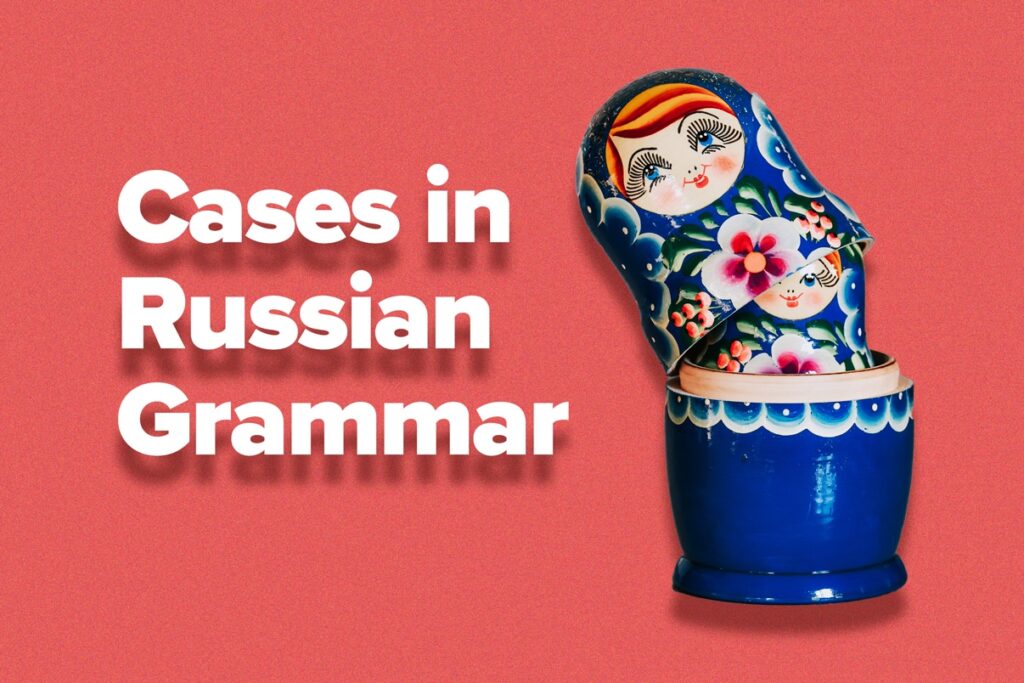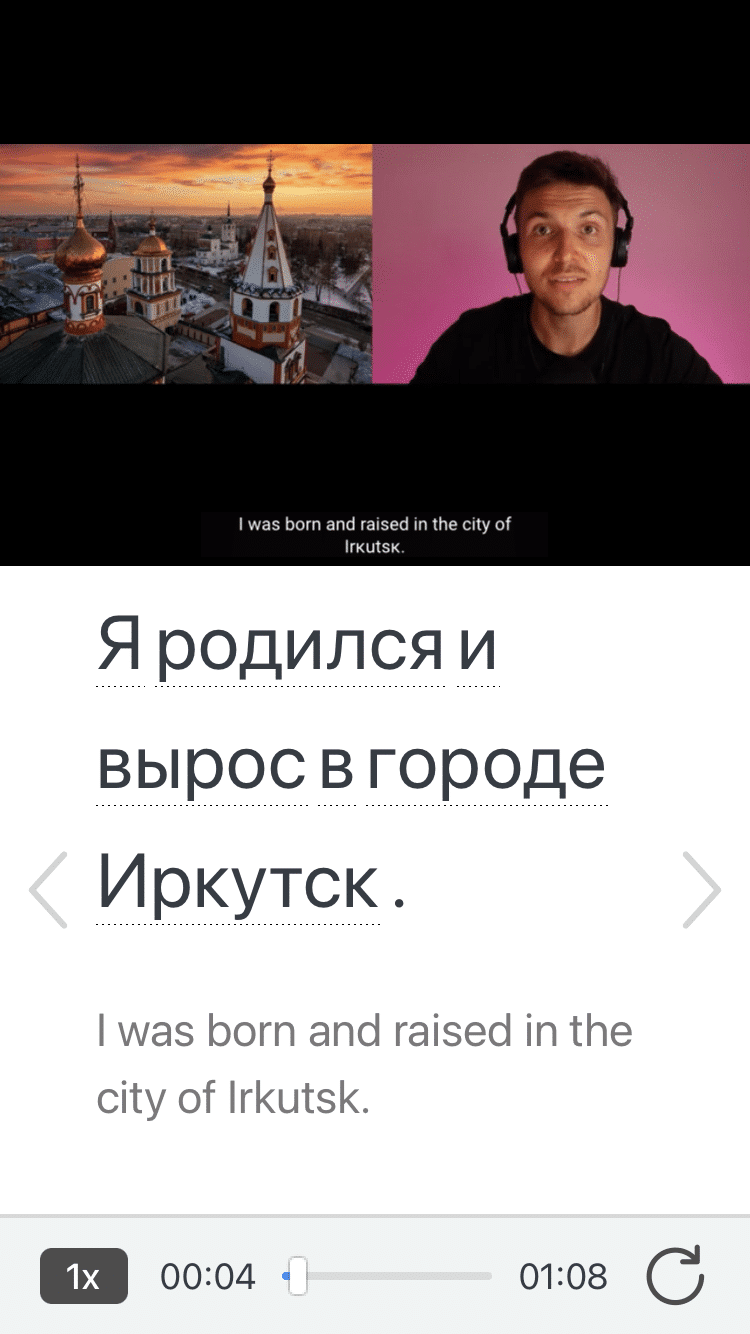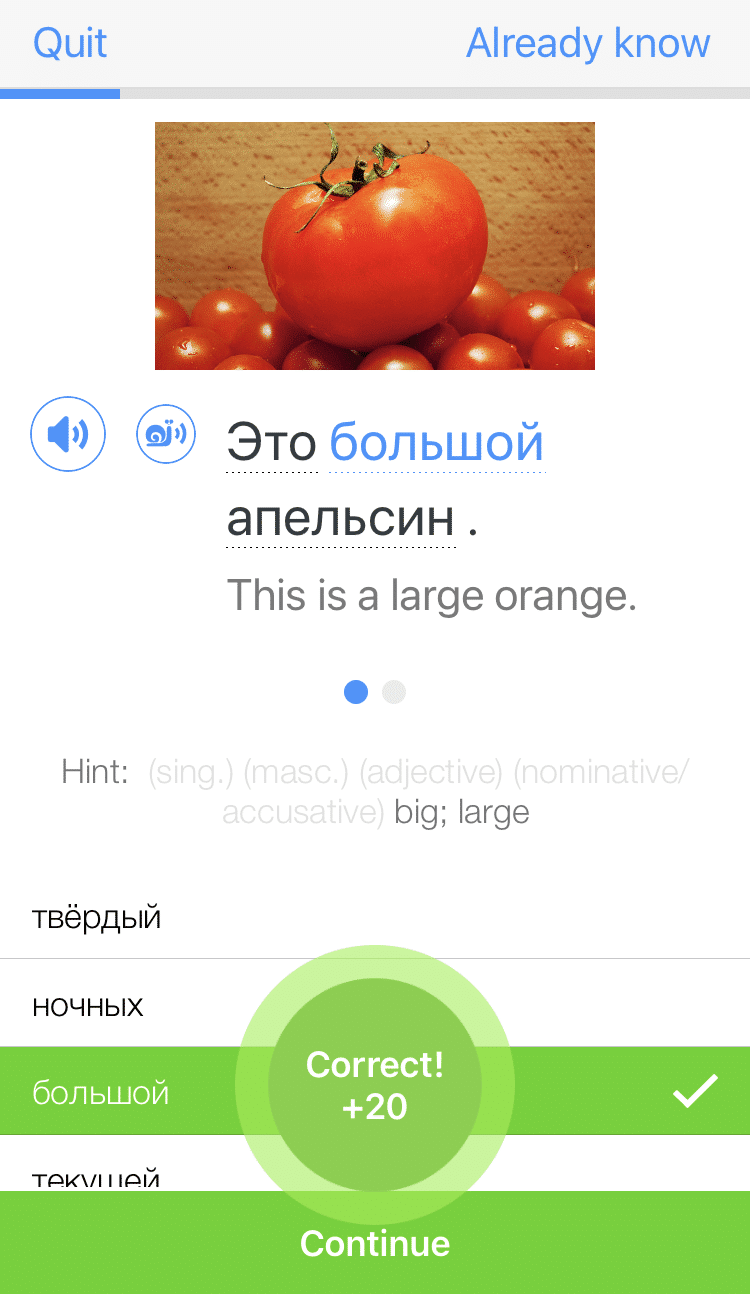
Russian Cases: Examples and Simple Explanations
Russian cases are one of the most challenging aspects of the language for learners.
In this post, we’ll explain what grammatical cases are and we’ll break down the six Russian cases into their most essential parts.
Contents
Download: This blog post is available as a convenient and portable PDF that you can take anywhere. Click here to get a copy. (Download)
What Are Cases in the Russian Language?
Grammatical cases are used to categorize nouns and their modifiers, which are determiners, adjectives, participles and numerals. Each of the categories, or cases, corresponds to a grammatical function in the sentence. In short, they help to keep sentences logical and organized.
Languages like English have largely lost this complex case category system, but other languages like German and Russian retain them.
The 6 Russian Cases Explained
The Nominative Case
This is the case you use for sentence subjects. This is known as the basic form of the noun and it’s the one you will find in the dictionary. Nouns in the nominative case are the “who” or “what” of the sentence.
Книга на столе.
The book is on the table.
Собака лает.
The dog is barking.
The Genitive Case
This case tells you that something belongs to somebody. It’s used to show possession or show a relationship, which eliminates the need for other possessive markers (like the ‘s in English).
офис компании, сестра ребенка, его команда
company’s office, child’s sister, his team
These examples provide an understanding of how this case can be encountered in both English and Russian.
In Russian, however, the genitive case includes a range of prepositional phrases that imply both a relationship and the lack of one.
Some of these are:
- без — without
- после — after
- около — near
- до — until/ till
- нет — not (lack of)
- от — from
- для — for
- у (есть) — to have (indicating possession)
A relationship can also be expressed without a preposition. This has an equivalent in English phrases with the word “of”:
бутылка вина (bottle of wine)
время урока (time of the lesson)
This case is also used to answer the question откуда? (from where?) using the preposition из (from, with reference to a location from which some movement began).
The Dative Case
This case indicates that something is given or addressed to someone or something.
Я заказал цветы подруге.
I ordered flowers for my girlfriend.
Flowers is the direct object in this sentence while girlfriend is the indirect object. Noun cases of this type answer the questions чему? (for what?) and кому? (for whom?).
It also answers the question куда? (to where?) using the preposition к (to or towards) in a subtle distinction from what was mentioned earlier in the case for direct objects.
Note that в and the accusative case are used when an area can be occupied due to the movement. к and the indirect object indicate movement that is merely towards or in the direction of someone or something.
The Accusative Case
This case covers the direct object, also known as the object of a transitive verb.
Майк любит Веру. Майк любит суп.
Mike loves Vera. Mike loves soup.
Vera and soup are the objects of Mike’s love and nouns here in the accusative case.
These nouns answer the questions что? (what?)—as in, “What does Mike love?”—and кого? (who?).
In Russian, accusative nouns can also answer the question куда? (to where?).
Куда ты идёшь? (Where are you going?)
Я иду в офис. (I am going to the office.)
The word офис is the object, or exists in the accusative state in Russian. Note the implication of moving somewhere in куда? (to where?) as opposed to the static positional aspect of где? (where is/are?).
The Instrumental Case
This case is used to show which “instrument” (a thing or a person) that something is done with. You need the instrument in order for the action to be set into motion and/or finished.
Я пишу ручкой.
I write with a pen.
The pen in this sentence is a tool used to perform an action and hence it is in the instrumental case.
Also remember that all uses of “with” in Russian, including those that actually take the preposition с (below) are regarded as being in the instrumental case, including when they refer to people.
Prepositions that call for the instrumental case are:
- с — with
- над — above
- под — below
- за — behind
- между — between
- перед — in front of
The Prepositional Case
This case covers the “who” or “what” but as the sentence’s object (as opposed to the subject).
Книга на столе.
The book is on the table.
The word столе here is a noun in the prepositional case. Russian nouns in this case are preceded by prepositions, such as в (in), на (on) and о/об (about).
The noun and preposition together answer the questions о чём? (about what?), о ком? (about whom?) and где? (where?).
For more on Russian declension, which is the process of putting nouns and their modifiers in their correct case forms, check out this post:
Russian Declension: Grammar Rules and Resources | FluentU Russian Blog
Russian declension giving you a headache? Clear up the confusion with our rundown of the rules and resources to master the necessary word endings. Once you understand…
Once you demystify the Russian case system, it isn’t as complex and confusing as it seems at first. Of course, you have to get your head around this new grammatical concept, especially if you come from a language background where the case system isn’t used at all. Seeing it in use by native Russian speakers, like the videos on the FluentU program, is one of the best ways to study this grammar aspect.
FluentU takes authentic videos—like music videos, movie trailers, news and inspiring talks—and turns them into personalized language learning lessons. You can try FluentU for free for 2 weeks. Check out the website or download the iOS app or Android app. P.S. Click here to take advantage of our current sale! (Expires at the end of this month.)
Stick with it and soon, you’ll be thinking like a native Russian speaker, declining (putting words into their correct form) Russian nouns and their modifiers with ease.
Download: This blog post is available as a convenient and portable PDF that you can take anywhere. Click here to get a copy. (Download)
If you love learning Russian and want to immerse yourself with authentic materials from Russia, then I should also tell you more about FluentU.
FluentU naturally and gradually eases you into learning the Russian language and culture. You'll learn real Russian as it's spoken by real Russian people!
FluentU has a very broad range of contemporary videos. Just a quick look will give you an idea of the variety of Russian-language content available on FluentU:
FluentU makes these native Russian videos approachable through interactive transcripts. Tap on any word to look it up instantly.
Access a complete interactive transcript of every video under the Dialogue tab. Easily review words and phrases with audio under Vocab.
All definitions have multiple examples, and they're written for Russian learners like you. Tap to add words you'd like to review to a vocab list.
And FluentU has a learn mode which turns every video into a language learning lesson. You can always swipe left or right to see more examples.
The best part? FluentU keeps track of your vocabulary, and gives you extra practice with difficult words. It'll even remind you when it’s time to review what you’ve learned. You'll have a 100% personalized experience.
Start using the FluentU website on your computer or tablet or, better yet, download the FluentU app from the iTunes or Google Play store. Click here to take advantage of our current sale! (Expires at the end of this month.)
And One More Thing...







